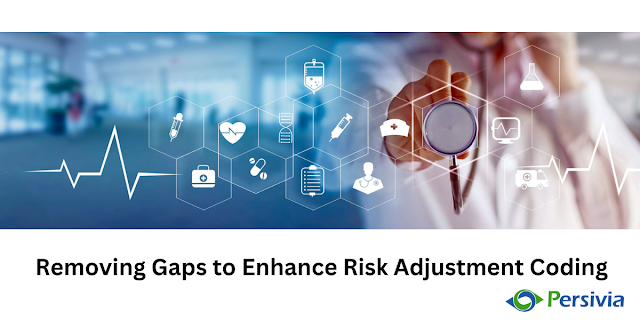Removing Gaps to Enhance Risk Adjustment Coding
A risk adjustment solution calculates risk scores using HCC coding to predict healthcare future costs. The HCC framework was not intended to complicate the HCC coding procedure. Its objective, however, is to present a clear image of each member's accurate and full profile in order to better comprehend their health state and care costs. Beneficiaries allow for payment for care that has an impact on patient outcomes. Appropriate compensation is a win-win for all the organizations involved- the member, healthcare plan, and physician.
Using HCC Coding alone in Risk Adjustment Solutions to improve HCC
capture and re-capture rates is an expensive technique. With this in mind, many
businesses are turning their attention to technology. This will assist them in
determining which findings are under-coded or wrongly coded. It is frequently
questioned in medical coding how HCC Coding Engine differentiates from Natural
Language Processing or NLP. Although both NLP methods use technology to limit
the amount of encounters that require full coder review, there are significant
differences.
Refining the Coding Flaws
Your HCC code documentation may be accurate and effective, and it does
not have to be a laborious process for your developers. Possessing the means
and capacity to give correct data is a wise place to start, but don't stop
there. To improve the effectiveness and correctness of HCC coding data, use one
of these three strategies:
· Maintain
Readiness in Review
Verifying the payments allows CMS to identify past and future
inappropriate payments, which may be costly for health plans. To fully
understand the health requirements of its members, a health plan must provide a
thorough member risk profile to its risk adjustment accuracy program. The
program's precision involves having access to automated software tools that
provide programmers with a list of precise coding. These methods aid in
reducing risk exposure.
· Enhancing
the Patient Care
To recognize chronic diseases, control expenditures, and calculate
accurate HCC risk scores, patients must be improved. The gathering, analysis,
and identification of conditions that are important to risk scores may be
improved with the use of technologies like NLP to give data-driven insights to
medical coders. The procedure will go more quickly than the standard review
procedure.
· Streamlining
the Processes:
The time spent evaluating records has been cut in half because of technological developments, which have streamlined the conventional risk adjustment accuracy procedure. Coding teams may now handle patient information on a wider scale and with more accuracy, in addition to enhancing efficiency.




Comments
Post a Comment